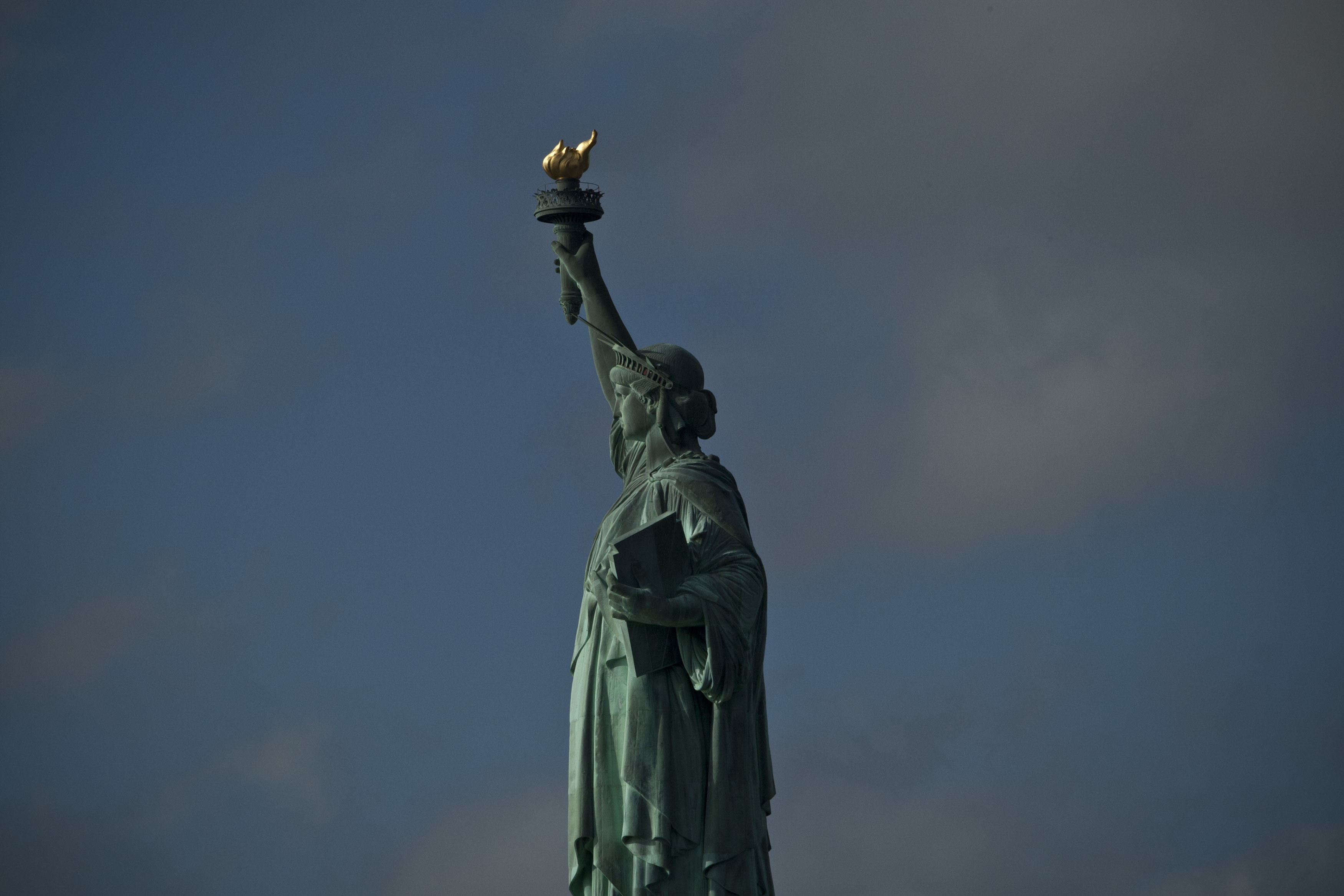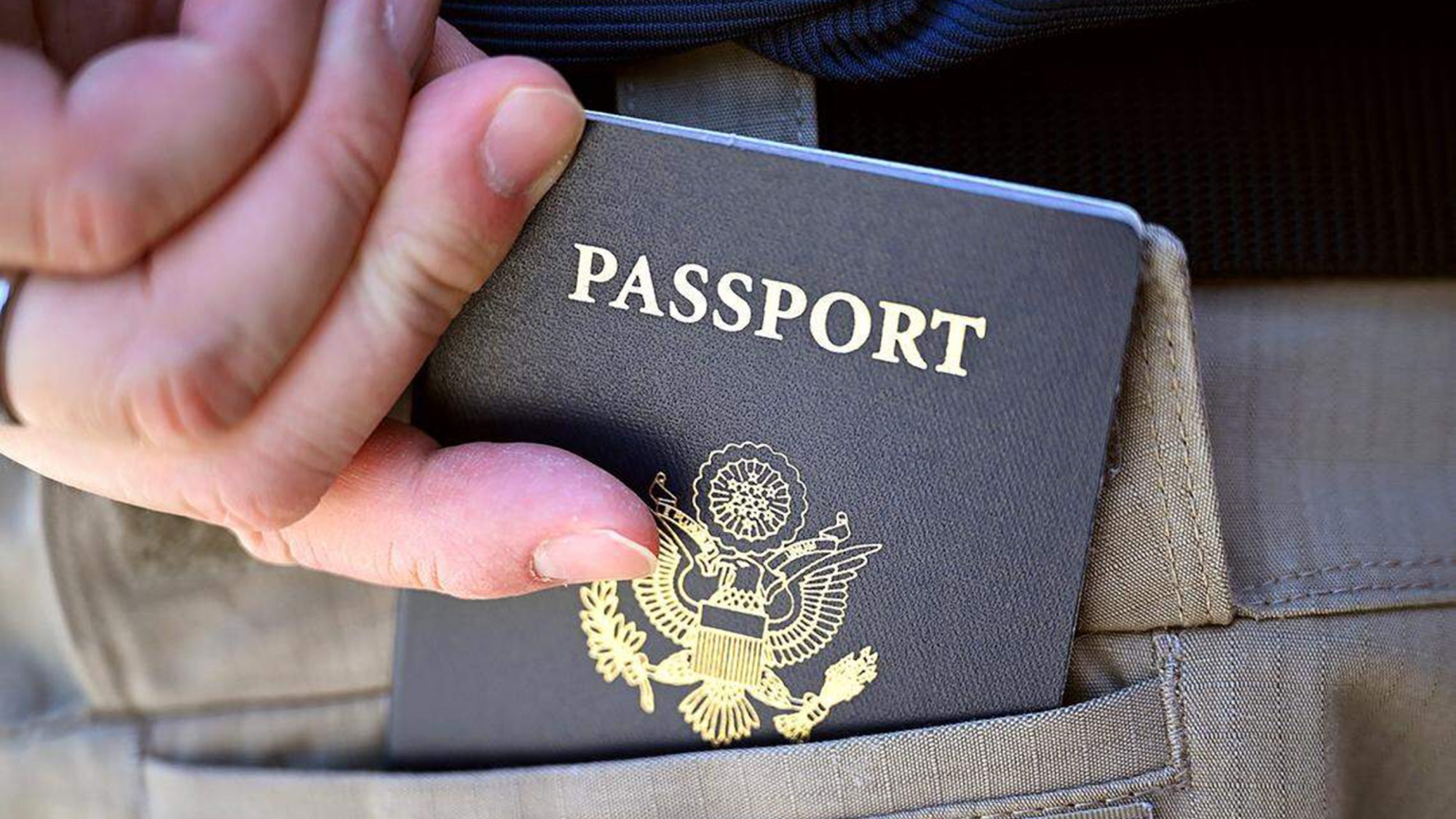Trump wants to make immigration white again
How new immigration policies use wealth as a dubious proxy for race


On Monday, Emma Lazarus wept.
Lazarus, of course, was the poet who celebrated that the United States welcomes the tired, the poor, the huddled masses of other lands. But on Monday, the Trump administration unveiled a new immigration policy that upends that tradition. The poor are no longer welcome. Instead, the immigrants with the best chances at getting past the gatekeepers and settling in America going forward will be rich, credentialed, and white.
Under the new policy, federal authorities will use "aggressive" wealth tests to reject residency or citizenship for an immigrant "because he or she is likely at any time to become a public charge" — receiving food stamps or other taxpayer-funded welfare state benefits. And officials can make that determination by considering the migrant's "age; health; family status; assets, resources, and financial status; and education and skills."
The Week
Escape your echo chamber. Get the facts behind the news, plus analysis from multiple perspectives.

Sign up for The Week's Free Newsletters
From our morning news briefing to a weekly Good News Newsletter, get the best of The Week delivered directly to your inbox.
From our morning news briefing to a weekly Good News Newsletter, get the best of The Week delivered directly to your inbox.
In other words, the best way to avoid deportation under this new policy is to not be poor. This is a betrayal of America's historic promise: The immigrants who arrived at Ellis Island a century ago did not, for the most part, come here on private yachts or in first-class berths. They came here to build new lives for themselves, and in the process, helped build their new country.
In practice, the new rule almost certainly means that more European migrants will go to the front of the line, and people of color will go to the back. According to the Pew Research Center, Mexicans comprise the largest group of migrants to the United States, but they are the group that most often arrives without a high school education. Migrants from Europe are the least likely to do so. And the Social Security Administration has found that first-generation immigrants from Europe and Japan "have initial earnings approaching or exceeding" other groups, including their U.S.-born counterparts. That's the kind of information immigration officials will use to determine who is economically viable — and thus ostensibly worthy of residency in the United States — and who is not.
It seems unlikely that the racial component of this is an accident. Trump, after all, once famously lamented the influx of migrants from "shithole countries" and pined for more arrivals from Norway. It was not difficult to understand what he meant. Rule-making on explicitly racial grounds would be vulnerable to a legal challenge, however. Which makes wealth a useful — if dubious — proxy.
Administration officials tried to make the new rule sound reasonable. "The benefit to taxpayers is a long-term benefit of seeking to ensure that our immigration system is bringing people to join us as American citizens, as legal permanent residents first, who can stand on their own two feet, who will not be reliant on the welfare system, especially in the age of the modern welfare state which is so expansive and expensive," said Ken Cuccinelli, the acting director of United States Citizenship and Immigration Services.
A free daily email with the biggest news stories of the day – and the best features from TheWeek.com
That rationale is true, though only if you judge the benefits and costs of immigration by the accomplishments of first-generation immigrants. Over time, immigrants and their families make America better. Immigrants are more likely than native-born Americans to be entrepreneurs. Their sons and daughters earn as much as other U.S. adults, are just as likely to be homeowners, and are more likely to be college graduates. Immigration is a multigenerational process, and — with some exceptions for violent felons — we should judge it as such. Hispanic immigrants, as a group, make giant economic strides in their second generation. A few months of food stamp use is a blip compared to lifetimes of accomplishments and contributions to the country. It's an investment in the future of America, really.
Trump's new policy is an indirect method of returning America to the days of its pre-1965 immigration law, when a quota system encouraged European migration and discouraged others. Back then, it wasn't wealth that was used to sort the "good" immigrants from the "bad" ones, it was literacy tests. The method is different, but the effect will probably be the same. Trump is doing everything he can to make immigration white again.
Joel Mathis is a writer with 30 years of newspaper and online journalism experience. His work also regularly appears in National Geographic and The Kansas City Star. His awards include best online commentary at the Online News Association and (twice) at the City and Regional Magazine Association.
-
 US citizens are carrying passports amid ICE fears
US citizens are carrying passports amid ICE fearsThe Explainer ‘You do what you have to do to avoid problems,’ one person told The Guardian
-
 All roads to Ukraine-Russia peace run through Donetsk
All roads to Ukraine-Russia peace run through DonetskIN THE SPOTLIGHT Volodymyr Zelenskyy is floating a major concession on one of the thorniest issues in the complex negotiations between Ukraine and Russia
-
 Why is Trump killing off clean energy?
Why is Trump killing off clean energy?Today's Big Question The president halts offshore wind farm construction
-
 Bari Weiss’ ‘60 Minutes’ scandal is about more than one report
Bari Weiss’ ‘60 Minutes’ scandal is about more than one reportIN THE SPOTLIGHT By blocking an approved segment on a controversial prison holding US deportees in El Salvador, the editor-in-chief of CBS News has become the main story
-
 Has Zohran Mamdani shown the Democrats how to win again?
Has Zohran Mamdani shown the Democrats how to win again?Today’s Big Question New York City mayoral election touted as victory for left-wing populists but moderate centrist wins elsewhere present more complex path for Democratic Party
-
 Millions turn out for anti-Trump ‘No Kings’ rallies
Millions turn out for anti-Trump ‘No Kings’ ralliesSpeed Read An estimated 7 million people participated, 2 million more than at the first ‘No Kings’ protest in June
-
 Ghislaine Maxwell: angling for a Trump pardon
Ghislaine Maxwell: angling for a Trump pardonTalking Point Convicted sex trafficker's testimony could shed new light on president's links to Jeffrey Epstein
-
 The last words and final moments of 40 presidents
The last words and final moments of 40 presidentsThe Explainer Some are eloquent quotes worthy of the holders of the highest office in the nation, and others... aren't
-
 The JFK files: the truth at last?
The JFK files: the truth at last?In The Spotlight More than 64,000 previously classified documents relating the 1963 assassination of John F. Kennedy have been released by the Trump administration
-
 'Seriously, not literally': how should the world take Donald Trump?
'Seriously, not literally': how should the world take Donald Trump?Today's big question White House rhetoric and reality look likely to become increasingly blurred
-
 Will Trump's 'madman' strategy pay off?
Will Trump's 'madman' strategy pay off?Today's Big Question Incoming US president likes to seem unpredictable but, this time round, world leaders could be wise to his playbook
